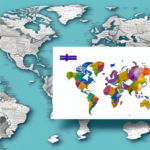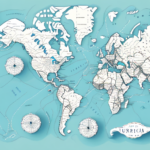Understanding the Australian Trade Agreement Form in UPS Worldship
As globalization continues to shape the economic landscape, international trade plays a pivotal role in driving growth. Businesses now have the opportunity to reach a global customer base, but this expansion comes with the complexity of navigating various regulations and customs procedures. For companies utilizing UPS Worldship to ship to Australia, understanding the Australian Trade Agreement Form is essential. This article provides a comprehensive overview of the form, its significance, and detailed instructions on how to complete it accurately.
What is the Australian Trade Agreement Form?
The Australian Trade Agreement Form, also known as the AUSFTA Certificate of Origin, is a critical document that certifies the origin of goods exported to Australia. Required by the Australian Department of Home Affairs, this form ensures that products originating from countries with which Australia has a free trade agreement receive preferential tariff treatment.
Completing the AUSFTA Certificate of Origin accurately is imperative. The form must include the exporter's and importer's names and addresses, a detailed description of the goods, their value, and the country of origin. Incorrect or incomplete information can lead to higher tariffs or the rejection of goods by Australian customs authorities, resulting in significant delays and additional costs.
Importance of Accurately Filling Out the Australian Trade Agreement Form
Accurate completion of the Australian Trade Agreement Form is crucial for several reasons:
- Preferential Tariff Treatment: Correct information allows businesses to benefit from reduced tariffs under the free trade agreement.
- Customs Clearance Efficiency: Proper documentation facilitates a smoother and faster customs clearance process.
- Regulatory Compliance: Ensures adherence to Australian regulations, avoiding legal issues and potential fines.
By meticulously filling out the form, businesses can minimize the risk of additional costs and ensure that their shipments are processed without unnecessary delays.
Benefits of Using UPS Worldship for Shipping to Australia
UPS Worldship offers a robust solution for businesses aiming to ship internationally, particularly to Australia. Some of the key benefits include:
- Streamlined Shipping Process: UPS Worldship consolidates all shipping tasks, including label printing, shipment tracking, and customs documentation, into a single platform.
- Access to Australian Trade Agreement Form: The platform provides easy access to the necessary forms, ensuring accurate and efficient completion.
- Competitive Pricing: UPS Worldship offers various shipping options tailored to different delivery speeds and package sizes, allowing businesses to choose the most cost-effective method.
- Exceptional Customer Support: Dedicated support teams are available to address any shipping-related inquiries or issues, enhancing the overall shipping experience.
By leveraging these features, businesses can save time and resources while ensuring reliable delivery of their products to Australia.
Accessing the Australian Trade Agreement Form in UPS Worldship
To access the Australian Trade Agreement Form within UPS Worldship, follow these steps:
- Navigate to the Forms tab within the UPS Worldship interface.
- Select Certificate of Origin from the available options.
- Choose Australia - AUSFTA and proceed with the on-screen instructions to complete the form.
Ensure that your shipment meets the requirements of the Australia-United States Free Trade Agreement (AUSFTA). If not, a different form will be necessary.
Before submission, double-check all entered information to prevent errors that could lead to delays or additional fees during the customs clearance process.
Step-by-Step Guide to Completing the Australian Trade Agreement Form
Accurate completion of the Australian Trade Agreement Form is essential. Here is a step-by-step guide:
- Exporter Information: Enter all required company and exporter details, including name and address.
- Goods Description: Provide a detailed description of the goods, including their Harmonized System (HS) tariff classification.
- Origin Indication: Specify whether the goods originate wholly in the United States, Australia, or both.
- Certification: Complete the certification section with the signature of the exporter or an authorized representative.
Remember, the Australian Trade Agreement Form is a legal document. Providing false or misleading information can lead to severe penalties. It is advisable to consult with a customs broker or trade lawyer if you are unfamiliar with the process or are dealing with complex shipments.
Common Mistakes to Avoid When Filling Out the Australian Trade Agreement Form
To ensure a smooth customs clearance process, avoid the following common mistakes:
- Incomplete or Inaccurate Information: Ensure all fields are accurately filled out.
- Missing Documentation: Provide all necessary supporting documents, such as bills of materials or manufacturer's affidavits.
- Omitting the Signature: Do not forget to sign the certification section.
- Using the Wrong Form: Verify that you are using the correct form for your specific trade agreement.
- Not Retaining Copies: Keep a copy of the completed form for your records.
Additionally, regularly check for the updated version of the form on the Australian Department of Home Affairs website to ensure compliance with the latest regulations.
Tips for Successful Shipping to Australia with UPS Worldship
Maximize the efficiency of your international shipments with these tips:
- Accuracy is Key: Ensure all information on the form is correct and up to date.
- Provide Supporting Evidence: Include necessary documents that verify the origin of goods.
- Double-Check Entries: Review the form thoroughly before submission to avoid errors.
- Maintain Records: Keep copies of all completed forms and related documents.
- Plan for Shipping Times: Consider Australian traffic seasons and delivery times when scheduling shipments.
Be aware of restricted or prohibited items by consulting the Australian Border Force website. Additionally, account for any applicable taxes or duties to prevent unexpected costs.
Frequently Asked Questions About the Australian Trade Agreement Form in UPS Worldship
Can I Complete the Australian Trade Agreement Form Manually?
Yes, manual completion is possible. However, using UPS Worldship's digital form simplifies the process by organizing all relevant information in one place, reducing the likelihood of errors.
Is There a Cost for Filling Out the Australian Trade Agreement Form?
No, there is no direct cost associated with completing the form. However, inaccuracies can lead to additional fees or fines imposed by customs authorities.
Is the Australian Trade Agreement Form Required for All Shipments to Australia?
No, it is only required for goods originating from countries that have a free trade agreement with Australia, such as the United States.
What Information is Needed to Complete the Australian Trade Agreement Form?
The form requires detailed information, including:
- Exporter’s name and address
- Importer’s name and address
- Description of the goods
- Value of the goods
- Country of origin
Providing accurate and comprehensive information is essential to avoid delays or additional fees.
Understanding Other Trade Agreements and Forms in UPS Worldship for International Shipping
Beyond the AUSFTA, UPS Worldship offers access to a variety of trade agreements and forms to facilitate international shipping. Some of these include:
- Trans-Pacific Partnership (TPP): Reduces trade barriers between the United States and 11 other Asia-Pacific countries.
- North American Free Trade Agreement (NAFTA): Now updated to the United States-Mexico-Canada Agreement (USMCA).
- CETA: Comprehensive Economic and Trade Agreement between the EU and Canada.
- KORUS: Korea-US Free Trade Agreement.
Utilizing these agreements can lead to reduced tariffs and streamlined customs procedures, enhancing the efficiency of your international shipments.
In addition to trade agreements, UPS Worldship provides various forms essential for compliance, such as commercial invoices, packing lists, and certificates of origin. Proper use of these forms ensures adherence to local regulations and prevents delays or penalties associated with non-compliance.
Conclusion
The Australian Trade Agreement Form is indispensable for businesses aiming to ship goods to Australia. Leveraging UPS Worldship not only provides easy access to this form but also offers numerous features that facilitate a smoother shipping process. By following the comprehensive guide and best practices outlined in this article, businesses can effectively navigate the complexities of international shipping and capitalize on the benefits of global trade.
Remember, the Australian Trade Agreement Form is just one of several necessary documents for international shipping. Ensuring the completion of all required export licenses and compliance with industry-specific regulations is crucial to avoid delays, fines, or seizure of goods. Partnering with experienced freight forwarders or customs brokers can further streamline the shipping process, providing expertise and resources that save time and mitigate risks.
For more information on the latest regulations and forms required for shipping to Australia, visit the Australian Border Force website.




















